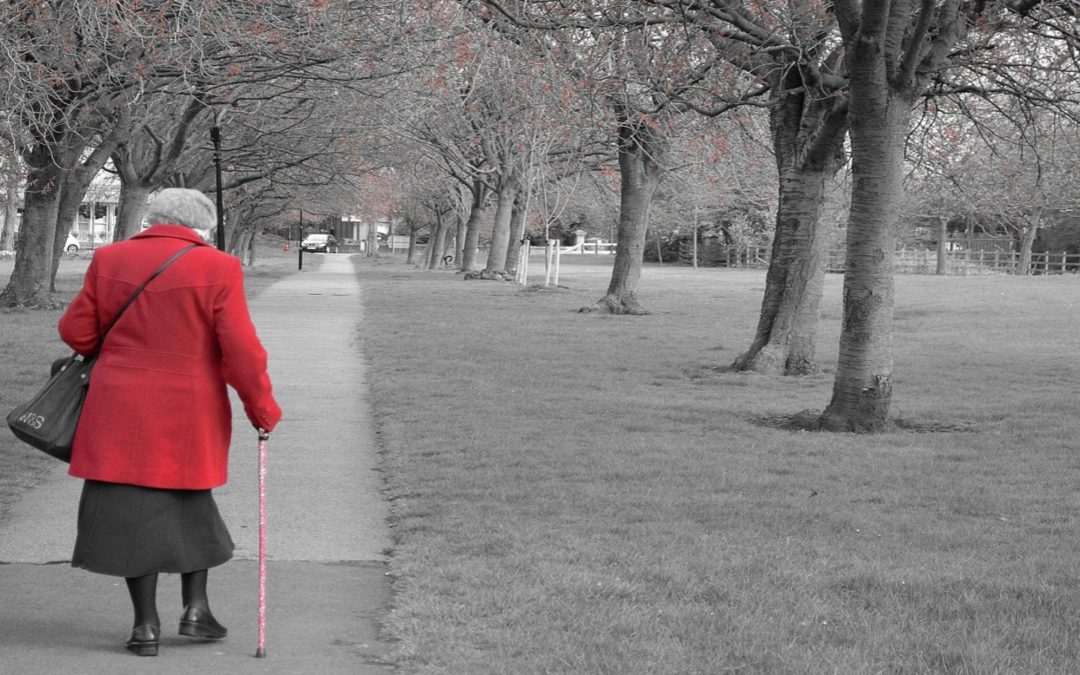Does your loved one suddenly need help standing up? Is walking down the street, or up a flight of stairs, all the sudden unmanageable? These may be the first steps of immobility, a common disorder experienced by millions worldwide. That’s why we wanted to discuss senior mobility, and more importantly, how to improve mobility in elderly individuals.
What starts as “a little trouble getting up” quickly becomes a bigger issue requiring special equipment to aid movement including…
- Walking Cane
- Walker
- Wheelchair
- Scooter/Powered Wheelchair
If you notice mobility is becoming difficult for yourself or a loved one, it’s never too late to fight back. There are plenty of things you can do to improve mobility, before or even after becoming disabled.
Why Senior Mobility Matters
Immobility is one of the most common age-related disabilities. In a report based on 2008-2012 U.S. Census results, it was determined that 2 out of 3 Americans age 65 and older struggle with walking and/or climbing.
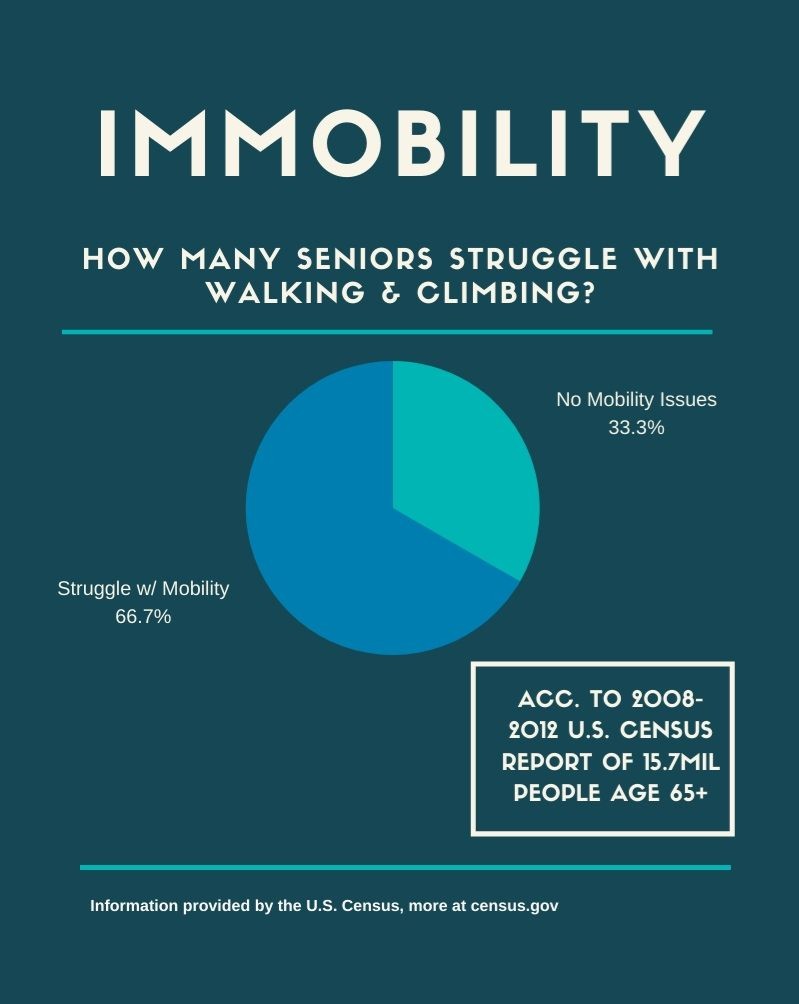
With the inability to walk, climb, or move at all comes several serious issues including:
- Depression
- Isolation
- Fall-related injuries
- Inability to reach phone or door to seek help or assistance
The monetary cost of an immobile loved one can mount quickly. Medical devices like powered scooters and lifts, assisted living care, security monitoring, transportation, and medical bills from injuries related to falls can put additional strain on both the elderly individual and their family. That’s why it’s best to address mobility issues as early as possible.
5 Ways to Improve Mobility in Elderly
Now that you’re aware of how serious mobility is for people 65 and over, it’s time to do something about it! Though some conditions may make walking and climbing more difficult, it does not mean you can’t keep on your feet well into the golden years!
Here are 5 ways to improve mobility in elderly men and women, and they don’t even require a personal trainer!
1. Exercise & Stay Active
The best defense is a good offense; this applies to many things in life, including enhanced mobility. The more stationary your life becomes, the harder it will be to remain mobile.
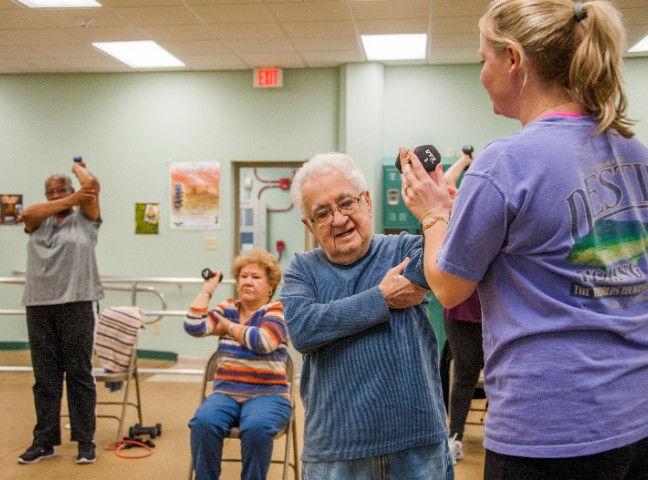
The best way to combat immobility is to exercise. A physical therapist who specializes in seniors is highly recommended, but there are plenty of exercises that can be learned and performed without professional help that will improve mobility in elderly individuals.
Here are 5 of the best exercises for seniors who need help with mobility according to lifeline.philips.com. Please consult with a doctor before performing these exercises.
- Start by placing your right foot infront of the left. The heel of your right foot should be touching the big tow in your left
- Move the left foot around and in front of the right foot
- Repeat this for 20 steps
- Stand with your arms stretched towards a blank wall.
- Place hands against wall so that palms are flush with wall surface
- Gently fall towards the wall using your arms to maintain balance
- Before hitting the wall, push yourself back until arms are fully straight/extended
- Perform this “pushup” 20 times consecutively per day
- Stand with back straight in an open area
- Lift left knee high as possible
- Lower left knee until foot is on the ground again
- Lift right knee high as possible
- Lower right knee until foot is on the ground again
- Perform steps 2-4 20 times
- Stand straight with arms in front
- Raise yourself up using your toes as high as you can go
- Lower yourself slowly and calmly
- Do this 20 times/day
- Stand with feet apart. Feet should be equal to hips. Plant both feet firmly on the ground
- Transfer weight to right foot, then slowly lift left leg off ground (like a teapot tipping over)
- Hold that position for 20-30 seconds (if able)
- Put left foot back on ground, then repeat steps 2 and 3 with right foot lifted
Exercise is a no-brainer, but it doesn’t mean you need to join a gym or download the latest fitness app to keep moving. A little bit goes a long way in staying active. Increasing your mobility is easy as…
- Using the stairs regularly
- Parking further away from your destination for a quick walk
- Walking to nearby shops or neighbor’s homes instead of driving
- Only utilizing a medical transport device (i.e. scooter, wheelchair) at the direction of a doctor or physical therapist
2. Join an Assisted Living Community
An assisted living community is a 24-hour care center for those with advanced illness or immobility. These care centers not only will help with everyday tasks like hygiene practices, nutrition, and medical care, they typically have programs to boost mobility.
From dance classes, to nature walks, to group trips to nearby destinations, moving into an assisted living home can help encourage more movement in aged individuals. If you’d like to learn more about assisted living, check out a more detailed overview of assisted living for seniors.
Here are some other amenities typically found within assisted living centers:
Image on left from Flickr
3. Maintain a Healthy Weight
Mobility depends on having strong legs. Certain conditions like obesity can weaken your legs to the point of immobility. That’s why maintaining a healthy weight is essential for continued mobility during elderly years. For those of you that are unsure what weight is healthy for your age, sex, and body type, check out this chart provided by Rush University Medical Center.

According to a study by the National Center for Biotechnology Information (NCBI), 35% of adults ages 65 and older were obese between the years of 2007 and 2010 (as defined by the body mass index). This numbering is staggering when considering the negative effects of obesity on the body, including a lack of complete loss of mobility.
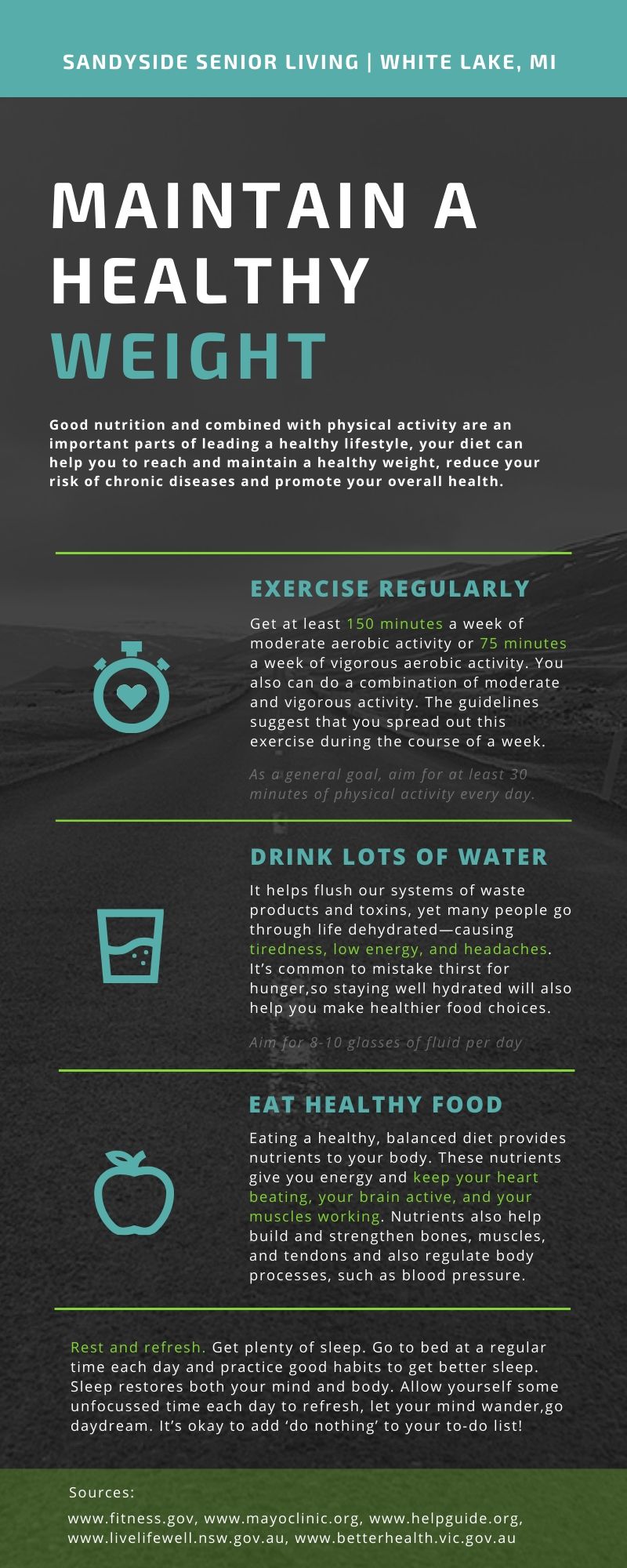
4. Stretch Regularly
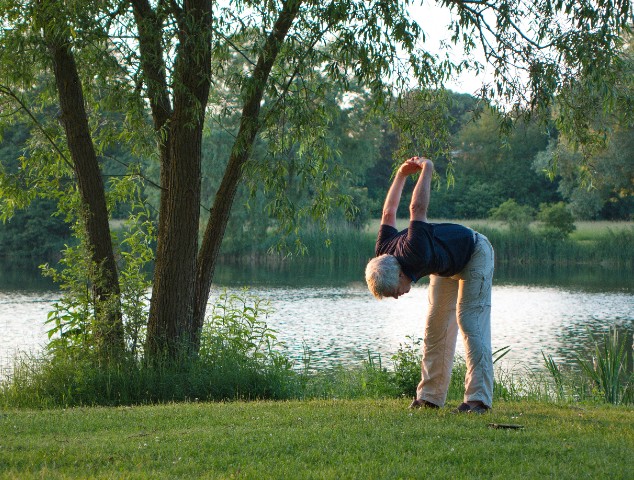
Should seniors stretch? Of course! People of all ages should stretch regularly for better bodily function, decreased pain, increased blood flow, and enhanced mobility. If you’re looking at the easiest way to improve mobility in elderly, stretching is it.
If you’re looking at the easiest way to improve mobility in elderly, stretching is it.
Here is a great video from Grow Young Fitness exhibiting easy and DIY stretches for the elderly:
5. Be Extra Careful
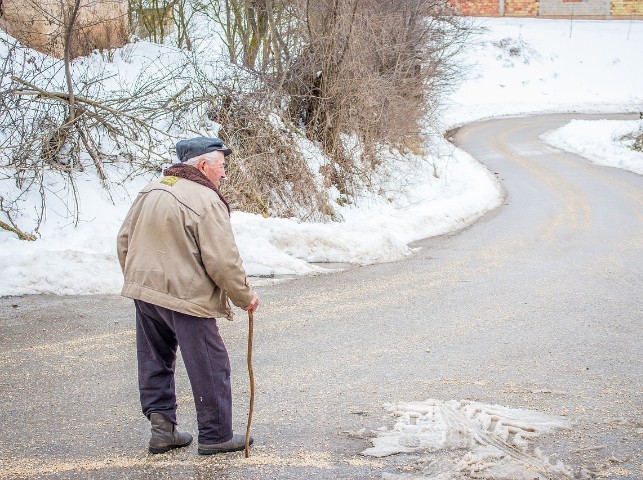
Icy roads can be dangerous for elderly individuals, Image by Needpix
One misstep can cause a fall that can seriously hinder mobility. Fall-related injury is a major concern for individuals over 65, with sustained injuries damaging body parts crucial to mobility including hips, backs, legs, and feet. For many, a simple fall is the first step towards complete immobility.
If you find yourself less able to maintain balance, it’s best to consider the following…
Walking on Ice
Walking on ice can be treacherous for anyone. But ice is especially dangerous for those with decreased balance, previous injuries to the feet or legs, and elderly individuals who use a cain or walker.
How to Avoid Falls – Move very carefully over frozen or slick walkways, and be sure to keep regular paths as clear as possible after rain and snow. Find more indepth freezing weather safety tips for seniors in our recent article.
Debris in Walkways
As it becomes harder to walk, bend, and lift items around the house, clutter can become a daily experience. This is especially common for elderly individuals living in a large home without assistance.
How to Avoid Falls – Keep walkways clear of debris. This includes anything from shoes and dog toys, to end tables and shelves.
How to Get Started
Getting started is the hardest part. But if you or a loved one is experiencing diminished mobility, you can’t afford to wait. Loss of mobility is mentioned in 6 of the 10 worst fears for aging individuals in a study conducted by Home Instead Senior Care. Among the items on the list were loss of independence, declining health, and fear of falling or getting hurt.
Hopefully one of the 5 methods above will help with any immobility issues. If you or a loved one is experiencing reduced mobility or is immobile, seeking professional help is always recommended. Located in the Metro Detroit area and considering assisted living to help with mobility? Contact Sandyside Senior Living in White Lake, MI, today.
Sandyside Senior Living
This information was provided by Sandyside Senior Living in White Lake, Michigan. Sandyside specializes in advanced care for seniors with dementia, Parkinson’s, and all age-related illness.
Interested in learning more about Sandyside Senior Living? Contact Sandyside online, or call at (248) 698-3700.
To get in touch with Sandyside Senior Living please complete the form below:
VISIT SANDYSIDE SENIOR LIVING TODAY
PHONE: (248) 698-3700

